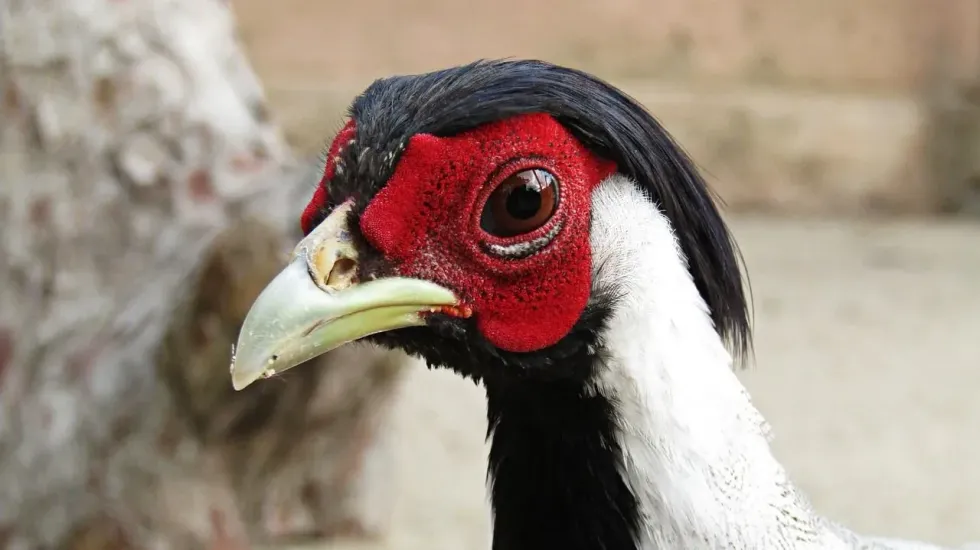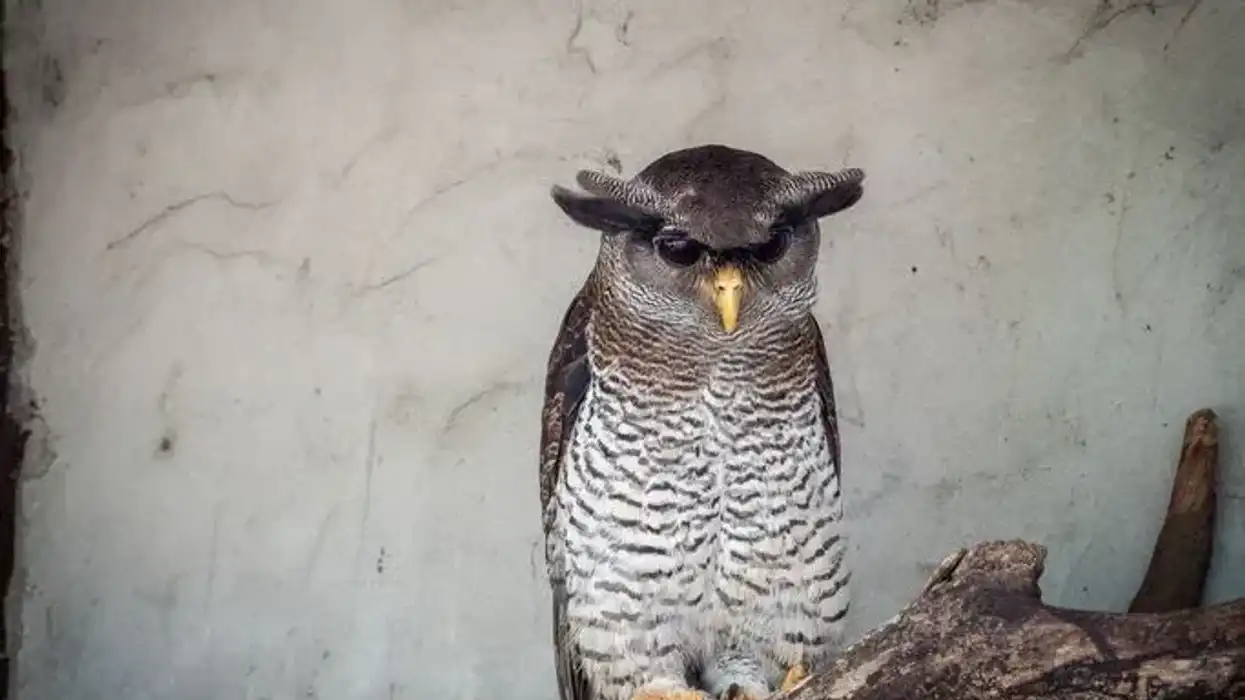Have you heard about the silver pheasant? The silver pheasant is a large aviary bird that belongs to the pheasant family.
These birds are usually seen in mainland Southeast Asia especially in eastern and southern China and Vietnam. Silver pheasants are ground-dwelling birds that are common aviculture.
These birds have many subspecies but the kalij pheasant is not one of them. Nycthemera is a species of pheasant with a bare red face and red legs wherein the male is black and white in color, whereas the female is mainly brown.
These appearance traits differentiate the silver pheasant from the kalij pheasant. But nonetheless, the silver pheasant is closely related to the kalij pheasant and the two are known to hybridize.
There are many other characteristics of silver pheasants from the genus Lophura. Wish to find them out? Here are some fun, engaging, and interesting facts on silver pheasants that will make you more curious about them. Afterwards, do check our other articles on the green pheasant and the imperial woodpecker.
Silver Pheasant Interesting Facts
What type of animal is a silver pheasant?
Silver pheasant (Lophura nycthemera) is a large aviary bird that belongs to the Phasianidae family. They are ground-dwelling birds that have many subspecies.
Silver pheasants mainly live in the range of mainland Southeast Asia especially in eastern and southern China, Myanmar, Thailand, and Vietnam. Kalij pheasants and silver pheasants sometimes hybridize and are related but are not subspecies of each other.
What class of animal does a silver pheasant belong to?
A silver pheasant (Lophura nycthemera) is a large pheasant that belongs to the Aves class. It comes under the Galliformes order of the Phasianidae family, like most of its subspecies. Its scientific name is Lophura nycthemera. It is Carl Linnaeus 1758 who described silver pheasants and it was placed in the Phasianus.
How many silver pheasants are there in the world?
The population of silver pheasants in China is around 10,000-100,000 breeding pairs according to the IUCN Red List. There is no accurate and rough estimate of the total numbers of silver pheasants and their subspecies in the world.
The population of certain subspecies is slightly decreasing in China but overall the bird faces no immediate threat to its population across the natural habitat in eastern and southern China, Cambodia, Vietnam, Myanmar, Thailand, Hainan, and Laos.
Where does a silver pheasant live?
Silver pheasant (lophura nycthemera) and its various subspecies can usually be seen in mainland southeast Asia, eastern and southern China, and their population is introduced in Hawaii and various locations in the US mainland. These wild birds are found in Cambodia, Myanmar, Vietnam, Thailand, and Argentina.
What is a silver pheasant's habitat?
A silver pheasant (Lophura nycthemera) prefers forests and mountainous regions, especially in mainland Southeast Asia. These wild birds are also found in the forest edge with open areas and do not like to be in dense forests. They are ground-dwelling birds and prefer to stay mostly on the ground.
Who do silver pheasants live with?
A silver pheasant (Lophura nycthemera) is likely to be seen in small flocks and is a social animal. But sometimes they can be seen alone too.
How long does a silver pheasant live?
A silver pheasant has an average lifespan ranging from 15-20 years and has a shorter lifespan in the wild. It may vary according to the surroundings.
How do they reproduce?
During the breeding season, a male silver pheasant mates with many female pheasants so it is polygynous. Courtship displays are performed by male silver pheasants during the breeding season that is between February to May to woo the females for mating.
After the mating process is over, females lay around six to nine eggs that hatch in around 25 days, and young chicks grow fast. Within two years the young silver pheasants are ready to breed.
What is their conservation status?
Silver pheasants are listed under the Least Concern species by the IUCN Red List. The species is common but their population is slightly decreasing due to the loss of habitat.
Silver Pheasant Fun Facts
What do silver pheasants look like?
A silver pheasant (Lophura nycthemera) is a spectacular species that are large and majestic. They are perfect aviary birds. Females are mostly brown and males are black and white in color.
They have red legs and bare red faces. Male silver pheasants have a silver-gray upper part with a glossy bluish-black crest and breast. These pheasants have long tails with black markings on the feathers.
How cute are they?
A silver pheasant (Lophura nycthemera) is a large and spectacular species. They are cute and majestic in appearance.
How do they communicate?
A silver pheasant communicates with each other using sounds. They usually make loud whistles and chirp with a high pitch. Silver pheasants also make cackles and grunt sound during courtship display too.
How big is a silver pheasant?
A silver pheasant is a large-sized bird and has a length of 47-49 in (120-125 cm) for a male silver pheasant and 22-35 (55-90 cm) for a female silver pheasant.
How fast can a silver pheasant fly?
A silver pheasant can fly up to a speed of 8-10 mph (12.8-16 kph).
How much does a silver pheasant weigh?
On an average scale, a male silver pheasant weighs around 2-4 lb (1-2 kg) and a female silver pheasant weighs around 2-3 lb (1-1.3 kg).
What are the male and female names of the species?
As a silver pheasant is a bird, its species is L. nycthemera. A male silver pheasant is called a cock and a female silver pheasant is called a hen.
What would you call a baby silver pheasant?
A baby silver pheasant is called a chick. The chicks are golden-brown in color with black lines and buff underparts.
What do they eat?
Silver pheasants are herbivores (frugivore, granivore). They mainly feed on seeds and fruits.
The main predators of the silver pheasant are foxes and hawks.
Are they dangerous?
A silver pheasant is not dangerous to humans. Male silver pheasants become aggressive and attack each other only during the breeding season.
Would they make a good pet?
A silver pheasant is a perfect aviary bird and is a wonderful pet. They are of low maintenance and are easy to look after.
Did you know...
Silver pheasants have an excellent sense of hearing and perfect eyesight which helps them to identify the predators.
In order to maintain their body temperature during the summer season, they breathe very quickly.
Are peacocks pheasants?
Both peacocks and pheasants belong to the Phasianidae family. Even though both of them are from the same family, they are different in size and color. They also live in different parts of the world.
How many subspecies does silver pheasant have?
The species name of silver pheasant is L. nycthemera. The L. nycthemera species has 15 subspecies. Some of them include Lao silver pheasant from southern Laos, Hainan silver pheasant from Hainan in southern China, Annam silver pheasant from southern Vietnam, and so on.
Here at Kidadl, we have carefully created lots of interesting family-friendly animal facts for everyone to discover! For more relatable content, check out these shiny cowbird facts and hooded grebe facts pages.
You can even occupy yourself at home by coloring in one of our Silver Pheasant coloring pages.










